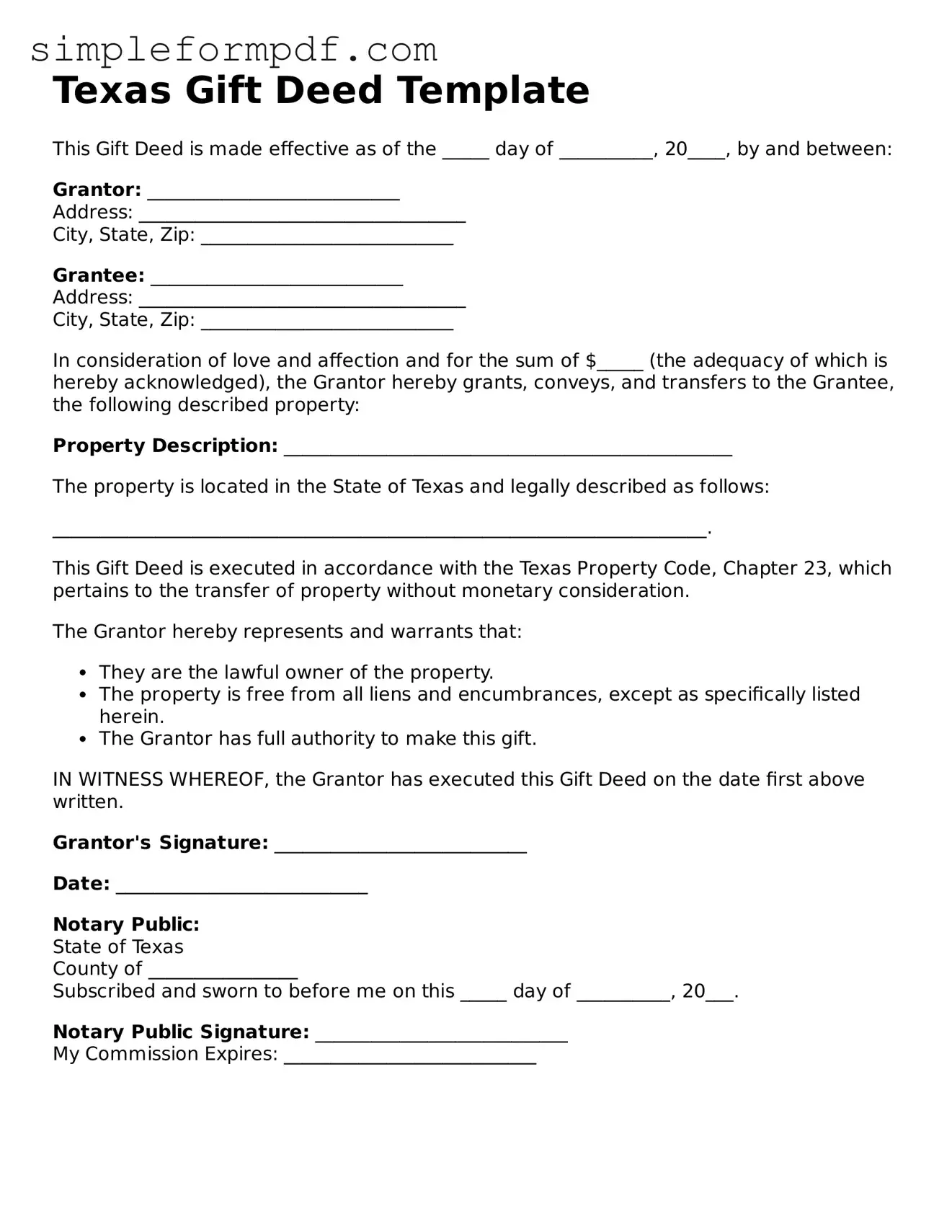Texas Gift Deed Template
This Gift Deed is made effective as of the _____ day of __________, 20____, by and between:
Grantor: ___________________________
Address: ___________________________________
City, State, Zip: ___________________________
Grantee: ___________________________
Address: ___________________________________
City, State, Zip: ___________________________
In consideration of love and affection and for the sum of $_____ (the adequacy of which is hereby acknowledged), the Grantor hereby grants, conveys, and transfers to the Grantee, the following described property:
Property Description: ________________________________________________
The property is located in the State of Texas and legally described as follows:
______________________________________________________________________.
This Gift Deed is executed in accordance with the Texas Property Code, Chapter 23, which pertains to the transfer of property without monetary consideration.
The Grantor hereby represents and warrants that:
- They are the lawful owner of the property.
- The property is free from all liens and encumbrances, except as specifically listed herein.
- The Grantor has full authority to make this gift.
IN WITNESS WHEREOF, the Grantor has executed this Gift Deed on the date first above written.
Grantor's Signature: ___________________________
Date: ___________________________
Notary Public:
State of Texas
County of ________________
Subscribed and sworn to before me on this _____ day of __________, 20___.
Notary Public Signature: ___________________________
My Commission Expires: ___________________________
